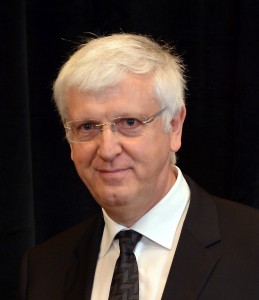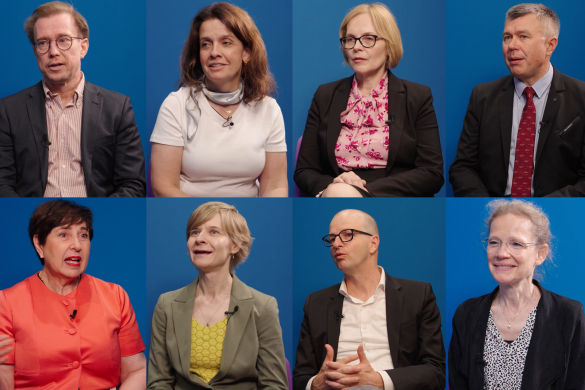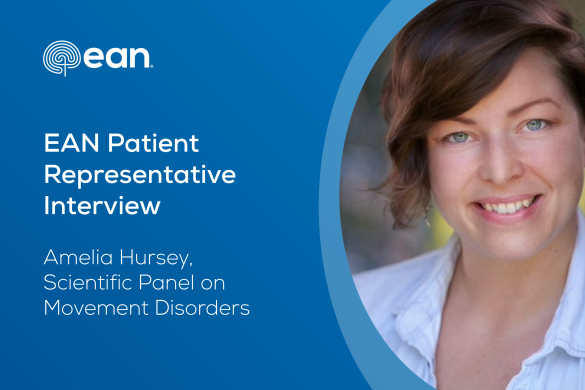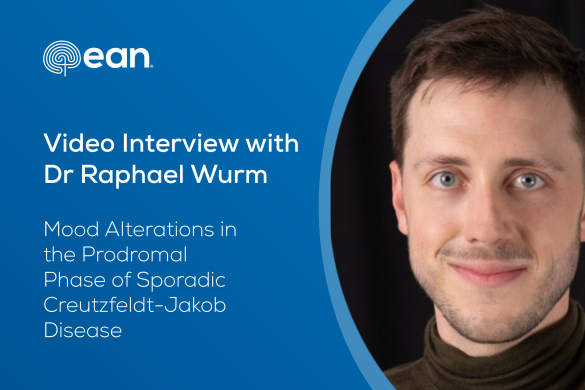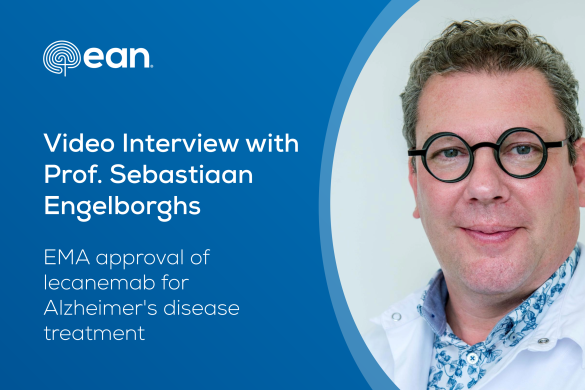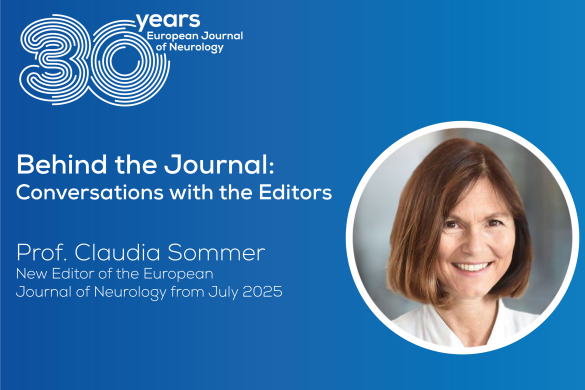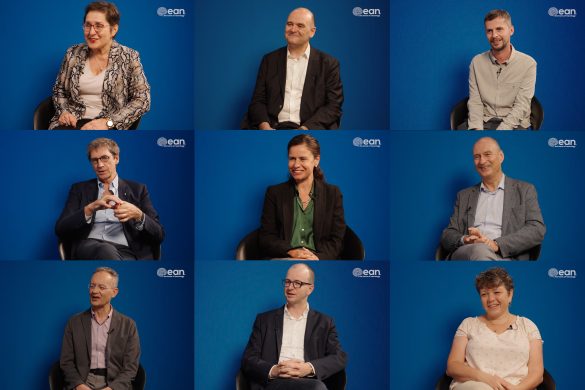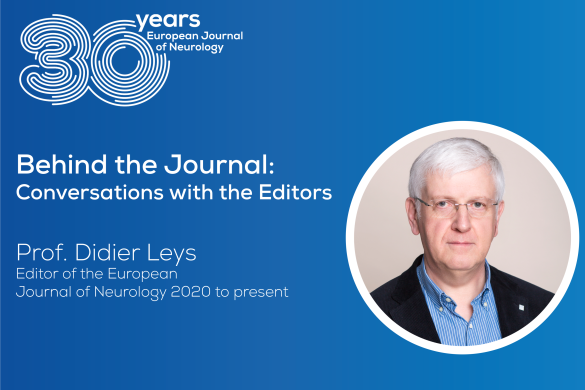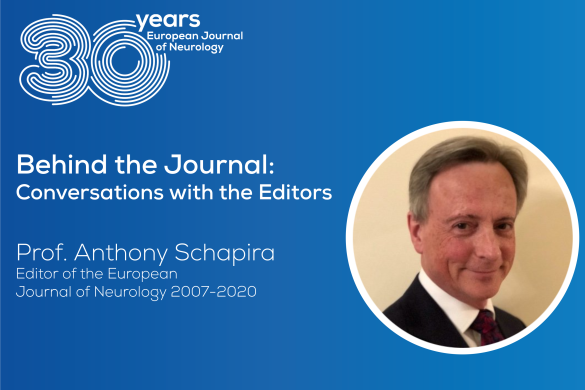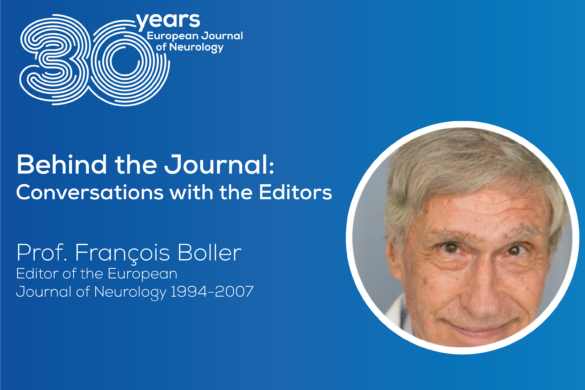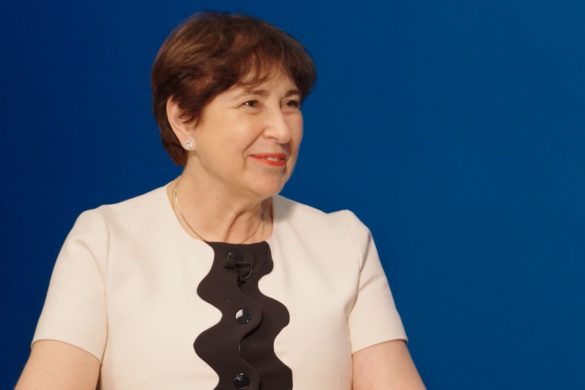Gian Luigi Lenzi (GLL): As Secretary General to EAN, can you illustrate the role you give to EAN within the community of European Neurologists?
Didier Leys (DL): The EAN is a society of both individual members and national societies. This is the society of all neurologists working in Europe, general neurologists as well as neurologists highly specialised in a specific subspecialty. The EAN represents a large panel of neurologists who have different types of subspecialties, work in different parts of Europe and in different types of practice, e.g. private, academic, general hospitals, etc. The EAN aims at having a translational approach, i.e. making a bridge between basic research and patients. The EAN provides an excellent opportunity for networking between neurologists who have different domains of expertise (e.g. stroke and epilepsy, movement disorders and cognition, etc.). Amongst the different roles of the EAN, one the most important is the publication of guidelines, in association with subspecialty societies or with other specialties when appropriate. Guidelines are of major interest not only for physicians, but also for health authorities. They show how patients with neurological disorders should be explored and treated, based on scientific evidence whenever possible, or agreement between experts when the level of evidence is weak. Besides, other domains where the EAN has to play a major role within the community of European Neurologists are networking, teaching, research and organisation of patients’ care. The annual meeting of the EAN is an excellent opportunity to achieve these objectives.
GLL: EAN needs to be the overall umbrella for neurology and neurology related specialties. How can your specific work on stroke bring an added value to this aim?
DL: The main difference between the EAN and the subspecialty societies is that the EAN represents a larger panel of neurologists, while subspecialties societies focus either to a smaller group of highly specialised physicians, or at the opposite to physicians who are not only neurologists (e.g. emergency medicine, neuroradiology, neurosurgery, cardiology, rehabilitation medicine for stroke…). The EAN makes a link between these subspecialties. The EAN and subspecialty societies are not in competition, but are complementary. The EAN represents a medical specialty which is broad while subspecialty societies represent specific diseases that may involve other specialties. I have worked as a general neurologist until the age of 37 years, before being specialised in the stroke field. Treating stroke patients needs a good knowledge of the other fields of neurology, at least of the central nervous system. Stroke symptoms are sometimes misleading and the first work of a stroke physician is to be sure that the patient has a stroke. Approximately 15% of patients admitted in stroke units have stroke mimics and it is important to identify them as soon as possible because they may need a specific treatment. On the other hand the identification of “stroke chameleons”, i.e. strokes revealed by unusual symptoms (psychiatric symptoms, movement disorders etc.) is crucial because these patients may need urgent treatments such as thrombolysis. Stroke is really a peculiar subspecialty of neurology, because stroke care needs a good knowledge of other fields of neurology (especially cognitive neurology, epilepsy, migraine, intensive care neurology) but on the other hand stroke care is not only the problem of neurologists and other specialties have an important role also (emergency medicine, radiology, rehabilitation medicine, and cardiology).
GLL: What is your view on the future of the educational grants for young neurologists allowing them to visit and work in different neurological departments throughout Europe?
DL: Educational grants for young neurologists are very important to achieve the educational objectives of the EAN. They are of different types and objectives. The Department-to-department co-operation programme has been launched by the EFNS in 2001 and were judged highly successful by both the participants and the host institutions. This grant supports a visit of 6 weeks only but this is enough to see how practices differ (or not!) in different parts of Europe, and may be the first step for longer stays or continuous collaborations between departments. In my previous experience from EFNS grants, such grants are more fruitful if the applicant is fluent in the language of the host institution because they have contacts with patients and the stay is too short for research purposes, where a good knowledge of English is enough. The fellowship programme provides 5 grants for scientific purposes and 3 for educational purposes, for duration of 3 to 12 months and up to 6 months respectively. Their objectives are different (research or acquisition of a new qualification that cannot be obtained locally). Although this is not stated in the application call, these grants are supposed to be dedicated to young people who have already some experience. Besides these 2 important programmes, the EAN will offer other grants for young neurologists that can be found in details on the website of the EAN.
GLL: Can you share with our readers your vision on how Neuropenews can help strengthen EAN’s identity?
DL: Neuropenews is an important tool of communication between EAN members. It provides professional information, e.g. recent advances in neurology, interviews, education corner, information on upcoming meetings, updates of guidelines etc. This is also a tool of communication within EAN members with the “forum” and other parts such as the twitter updates. There is one part of Neuropenews that is probably underused: the grand rounds. Neuropenews remains open to neurologists if they propose an interesting unresolved neurologic case for discussion.
GLL: Thank you for your time.
Didier Leys is Professor of Neurology and Head of the Neurological Department at the Lille University Hospital, France

